St. Bernard
The real “snow angel”, which in its long history has saved not one hundred people, is St. Bernard. Learn more about its fascinating history and content features with us.
- Origin Switzerland / Italy, Growth 60 - 80 сm., Weight 50 - 90 kg.
- Lifespan 8-12 years
Popularity
Wool length
Size
Health
Mind and wit
Fit for allergics: No
Name of the breed: St. Bernard
For families with children: Yes
Dog guard: No
Difficulty of care: Yes
Guide-dog: Yes
Ability to train: Yes
 Interesting Facts
Interesting Facts
- Despite the fact that St. Bernard is very pleasant character, nevertheless, many complain about the fact that he does not like small dogs at all.
- Dog "Barry" - a real celebrity and a true hero. During his life, he saved more than 40 people from being killed in the mountains!

- The dog is best kept in a private house, where she could walk freely for as long as she needed. Representatives of this breed do not accept leashes - they need complete freedom!
- St. Bernard takes its origin from the Tibetan mastiff, imported to Europe and crossed with various species of local dogs.
- The average life expectancy of these pets, as a rule, is within 8 years.
_120x126.jpg) History of St. Bernard
History of St. Bernard
This is a breed with a very long and interesting history that would easily form the basis of an exciting movie about real heroes. Yes, yes, heroes! After all, the history of St. Bernard is not limited to breeding the breed, but describes the real feats of these dogs in saving people.
These dogs got their name from the name of a monastery located in the Swiss Alps. It was there that the monks in the distant 17th century had the idea to use these four-legged people as rescuers.
Helping people there was really necessary. The monastery was located high in the mountains, where the climate and geographical conditions were as severe as possible. Often, simple travelers were buried alive under a layer of snow avalanche. It was then that the St. Bernard came to the rescue of them, who, thanks to an amazing scent, could smell a person at very long distances, and thanks to a strong build he was able to carry the rescued person to the monastery.
Specifically, the work on the appearance began only in the 19th century.
_120x127.jpg) What does St. Bernard look like?
What does St. Bernard look like?
This breed is characterized by very large parameters. The growth of its representatives is not less than 65-70 cm, and the weight exceeds the mark of 70 kg.
It is obvious that the torso of the dog is large, strong, well-built. Limbs straight, parallel and very strong. St. Bernard looks like a real giant.
The head is also not small, wide. The forehead of these pets is quite large, the transition from the cranial part of the head to the front is clearly visible. The eyes are small, close-set, of brown color and its shades. Ears hang down the sides of the head.
The coat helped the dog to resist any frost. It is very thick and dense. There is a warm undercoat. The wool itself is soft and silky. St. Bernard can be both long-haired and short-haired. Color is represented by combinations of white and red colors.
 The nature of the breed
The nature of the breed
These quadrupeds are very intelligent and loyal. They are literally ready to do anything for the sake of man. They love their master infinitely, but they treat children with warmth, patience and awe.
The character of St. Bernard is very positive.
_120x106.png) What to feed St. Bernard?
What to feed St. Bernard?
Choosing a breed for yourself, you need to be prepared for the fact that a dog needs a lot of food. This applies to all categories of food.
Veterinarians advise on a natural type of feeding and are increasingly in doubt about the benefits of a mixed type. Feeding should be done at the same time, from the same dish and in equal portions. Try to avoid spice and abundance of salt.
Carefully ensure that feeding the St. Bernard does not end with overeating and a full stomach. In the future, this will lead to excess weight and huge health problems.
Include the following in your diet:
Raw lean meat
Sea fish
Kashi
Vegetables
Cottage cheese
Eggs
_120x120.png) Saint Bernard training
Saint Bernard training
In general, raising this breed is no different from training other dogs. It is subject to generally accepted principles and rules.
Always need to remember that in the first days of life it is not necessary to allow the puppy something that will be forbidden to him later. From the very first minutes of his appearance in the house, start upbringing and give no indulgence.
Of course, rigor, aggressiveness and rudeness will not help in this matter. It is better to treat the puppy with respect and warmth, and then he will answer you the same. Always keep some goodies with you so that you can praise your pet in case of his good behavior.
We must not forget not only about training for teams, but also about the general socialization of the animal. The training of St. Bernard should begin with the training to the owners, to strangers, the rules of behavior in the house, away and on the street.
Do you like this breed? Choose a suitable offer on PetGlobals.com!
We collected the advertisements from all around the world and placed them on international platform for buying/selling pets. Only on our Web-site you can find the most rare breeds of cats and dogs!
Advertisements for buying/selling cats
Advertisements for buying/selling dogs
With help of PetGlobals.com your future pet is closer to you!
 Select language
Select language 





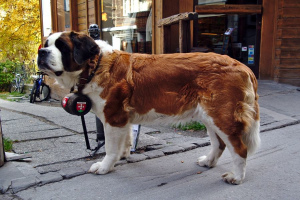
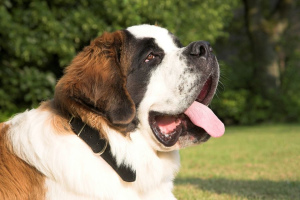


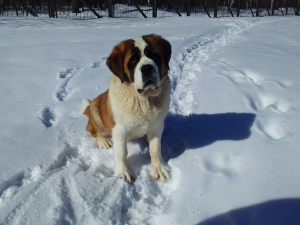
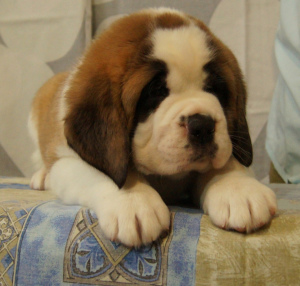
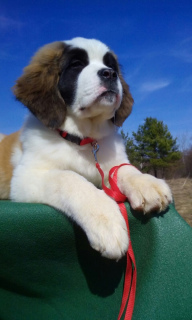
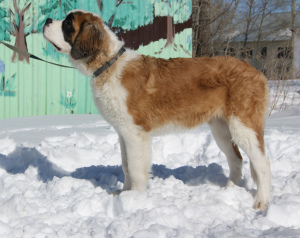
.png)
